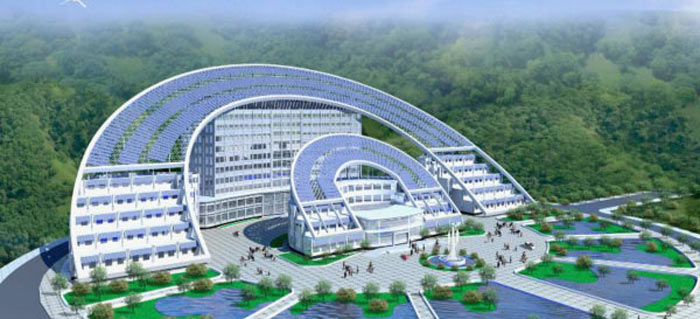US trade war and illegal sanctions risk shortages in world’s top silicon-producing region.
TOKYO — on 4 July 2021, the Nikkei Asia news outlet reported that US sanctions against the Chinese solar manufacturing industry “are now casting a shadow over the solar industry” and “one of the world’s biggest sources of silicon.”
The article reported that “the price of silicon used to make polycrystalline wafers for solar panels now stands at more than $27 per kilogram, compared with $6 or so in June 2020, according to Tokyo-based consulting firm RTS. Panel prices account for about 40% of the cost of a solar project. Roughly 80% of global production of this raw material — which does not need to be as pure as the silicon used in semiconductors — is handled in China, with about half of that in Xinjiang.”

The dramatic increase in cost has the potential to undermine the economics of solar energy world-wide, in particular for developing countries. Low cost solar is one of the main paths away from fossil fuel consumption. Low cost Chinese solar panels have been the principal factor behind the dramatic fall in the price of solar power worldwide and the global expansion of solar energy.
Nikkei Asia noted that “the price spike started last summer, when explosions and a fire at silicon plants in Xinjiang led to a shortage.” Such fires are known to have occurred in US and Japanese polycrystalline plants in recent times. Xianjiang has also witnessed numerous terrorist attacks by US backed Islamist “separatists”.
The Biden regime in May flagged that it would impose “sanctions” on China’s solar panels industry as part of its all out economic war China. This has resulted in market instability as solar panel makers became concerned about the potential disruptions to global supply chains and manufactures hurried to build up silicon stock piles. Illegal US bans on Chinese businesses were imposed by the US shortly afterwards.
Commenting on the impact of shortages of silicon waffers on prices in Japan, Nickkei Asia said that prices were rising sharply in Japan, with increases of between 30% and 40%. Apart from the increase in production costs, “Chinese panel makers are prioritizing domestic supply, which has squeezed shipments to Japan,” according to a research firm quoted by the Nikkei Asia article.
According to Nikkei Asia, Japanese firms accounted for a tiny 0.4% of the global market last year, which is only enough to meet about a tenth of domestic demand.
“Japan has little room to expand production itself. While its solar panel makers once led the world, they have since lost out to Chinese competitors and largely faded into the background. Panasonic and Mitsubishi Electric have decided to stop making panels, and Sharp and Kyocera have scaled back output.”

Source: information from Nikkei Asia, July 4, 2021
Leave a Reply
You must be logged in to post a comment.